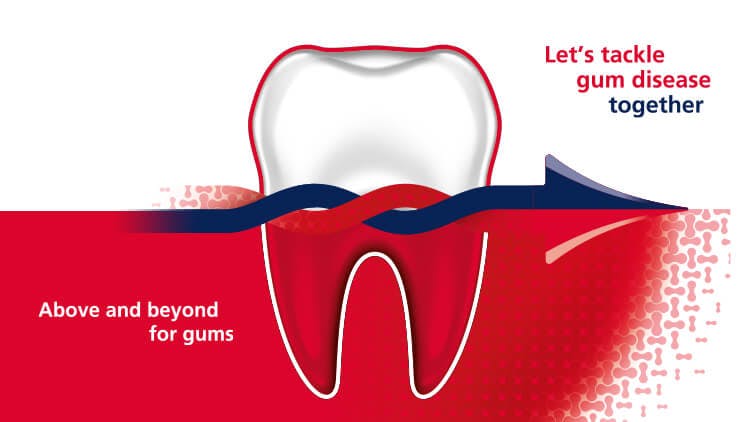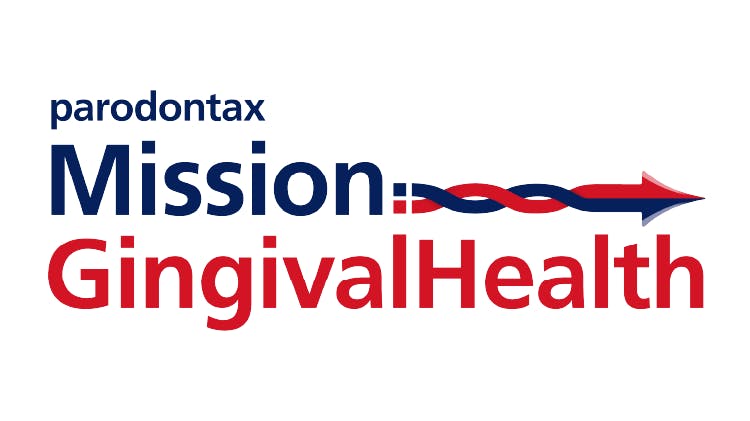Part 2: Making the change

Introduction
Changing patients’ oral hygiene behaviour is arguably the most important factor in reducing the prevalence and severity of periodontal disease across the world. There are multiple barriers to achieving this, and as dental health professionals you are instrumental in helping your patients overcome these to improve their oral health and overall quality of life.
Periodontal disease affects approximately half the global population, and is the sixth most prevalent health condition globally.1 The key to reducing incidences and improving outcomes for patients is through improved oral hygiene behaviours. By more effectively preventing and removing plaque, occurrences of gingivitis can be reduced to prevent it developing into more serious conditions.
In Part 1 of this article, part of our ‘Mission: Gingival Health’ series, we discussed the importance of changing patients’ behaviour, and examined some of the barriers that dental professionals might encounter when it comes to helping patients make and sustain that change.
In this second part, we will look at the instrumental role of dental professionals in educating, equipping and motivating patients to overcome these barriers and change their oral hygiene behaviours in an effective and sustained way. We will also point you towards tools that may help you when discussing these issues with your patients and make it easier to overcome some of the barriers discussed in Part 1.
Making the change
It can be frustrating when patients fail to follow your gum health advice as a medical professional, but understanding the barriers to behavioural change allows us to help overcome them. To successfully encourage the desired behaviours, it is important to ensure that patients have the Capability, the Opportunity and the Motivation to adopt them as a regular and habitual element of their day-to-day lives.2
Questions to ask your patient:
- How important do you think it is that you change your oral hygiene routine?
- What do you think might happen if you don’t?
- How confident are you that you know what you need to do?
- Is there anything that you’d like more information on?
- What additional support can I give you to change?
Keeping the change
Changing behaviour is a continuous process. It may start with the patient being unaware that there is an issue, so at this stage your role as a dental professional will be to start the conversation by providing information and advice about what needs to change and why. You should ask open questions to explore the patient’s feelings and values. For example, you can ask if the patient understands what they need to do differently, and what could happen to their gum health if they don’t, how confident the patient feels, and if there are any reasons they think they might not be able to.3
Make sure that the patient knows that you can see their point of view and understand the difficulties involved in changing. You could help the patient understand the consequences, both short- and long-term, of their current oral behaviours, and make them feel positive about the benefits of changing.3 Help the patient plan how they will go about adopting new behaviours and set goals, and provide advice on maintaining the change and avoiding relapsing into old patterns of behaviour.4
Behavioural change interventions can be delivered in different ways. The most common method is a face-to-face conversation, but this can be supported with printed materials or digital resources such as links to helpful websites or apps. The dental professional should also schedule on-going behavioural change interventions, considering the frequency and timing to best support the patient.3
You can access a range of patient materials to support your advice here
Stronger together
Although ultimately the onus must be on the patient to change their behaviours for the good of their own health, your role as a dental professional to help effect this change must not be underestimated. If seeing patients fail to change their behaviour, and suffering health effects as a result, is frustrating and disheartening, then it is incredibly rewarding and encouraging for a dental professional to see patients take their advice to heart and make effective, long-term changes that bring multiple benefits to the patient’s health and wellbeing.5
Creating informed, empowered and motivated advocates for oral health and hygiene represents a major success for any dental health professional, and such individuals will help spread the word to family and friends, compounding the benefits even further. More information on helping patients change their behaviour, and tools and tips to make this easier, can be found here.
Views from your professional peers
In 2022, Haleon hosted a round table featuring five international renowned periodontal specialists. This video features their discussion on supporting patient behaviour change to reduce global incidences of periodontitis:
“We need to build patient self-efficacy, and once they understand the disease process, by understanding why they have it and understanding the risks, we then need to move to a phase where we explain what they can do about it. So I think that’s really, really important.” Professor Iain Chapple.
“But it seems to me that so many people, and I include myself not too many years ago, would have struggled with behaviour change, the kind of thing that somehow I should be able to do but I hadn’t been taught and I didn’t have the experience and where on earth do I start?” Professor Ian Needleman.
What’s next?
So far in this series we’ve covered the importance of maintaining gingival health and bringing greater attention to the benefits of preventative action, and we’ve discussed the vital role of dental professionals in helping patients make effective behavioural changes to improve their oral hygiene.
In the next article we will be examining the science supporting the role of specific formulations in enhancing plaque removal. This will help to support the work of dental healthcare professionals in delivering effective care in their patients’ homes. Gingivitis is still a huge problem globally. It is highly unlikely that it is a problem that can ever be completely eradicated, but with the right behaviours, conversations and science, it is a problem that could be massively reduced, bringing with it improvements to health and quality of life for people around the world.
Additional resources

parodontax overview
Discover more about our global commitment to the prevention of gum disease.

Supporting you to help patients on a journey to improved gum health
Find out more about how we can partner with you to support a change in patient behaviour to harness the power of daily oral hygiene between dental appointments.

Mission: Gingival Health
This space has been created and designed for you where you will find the latest news in gingival science, insights and commentary from thought leaders, conferences and events.


